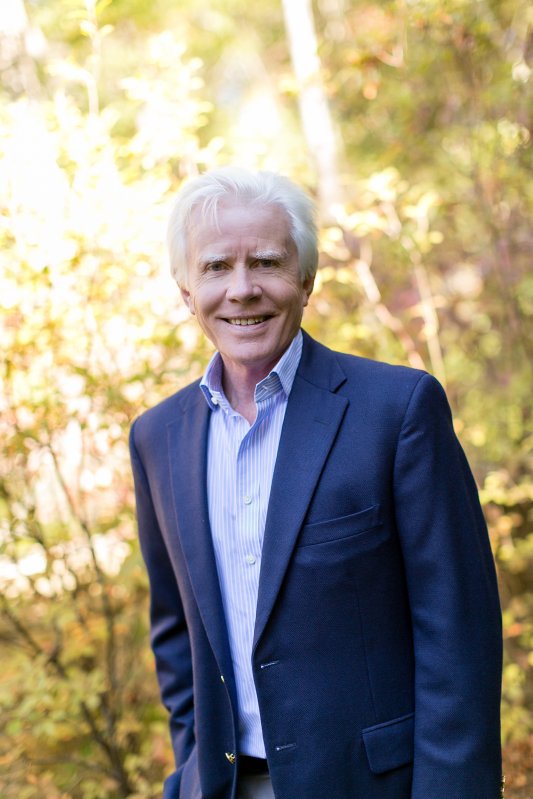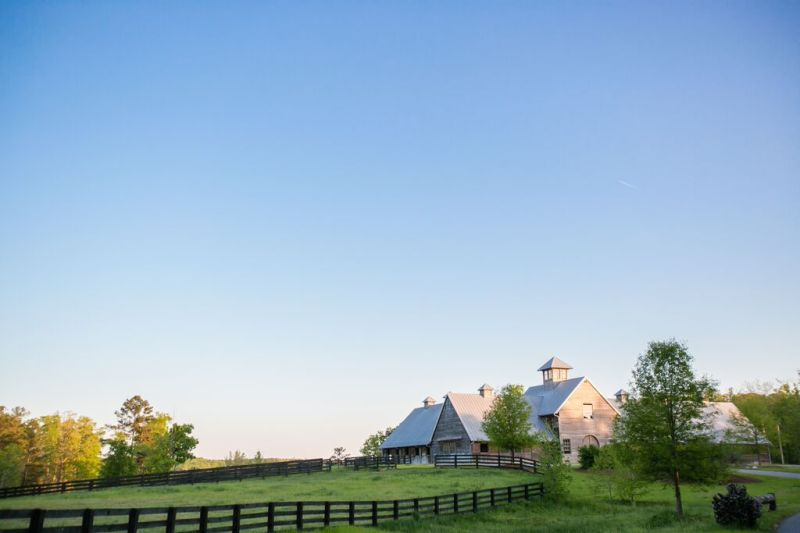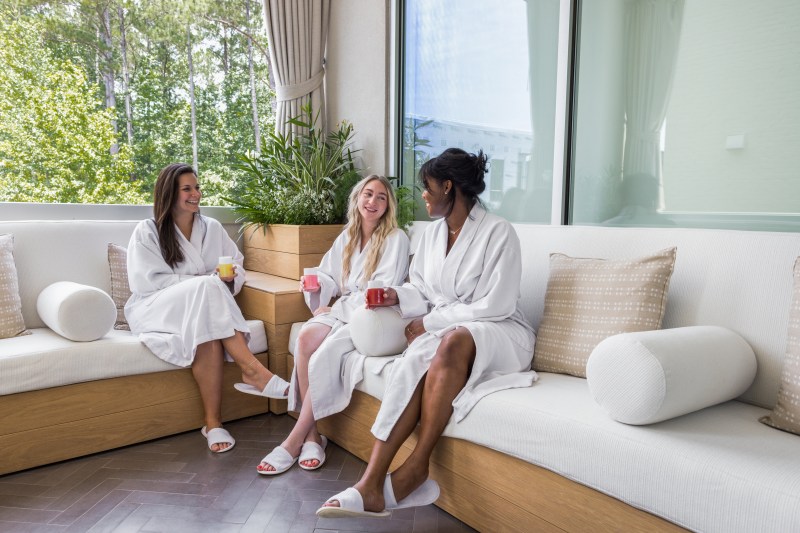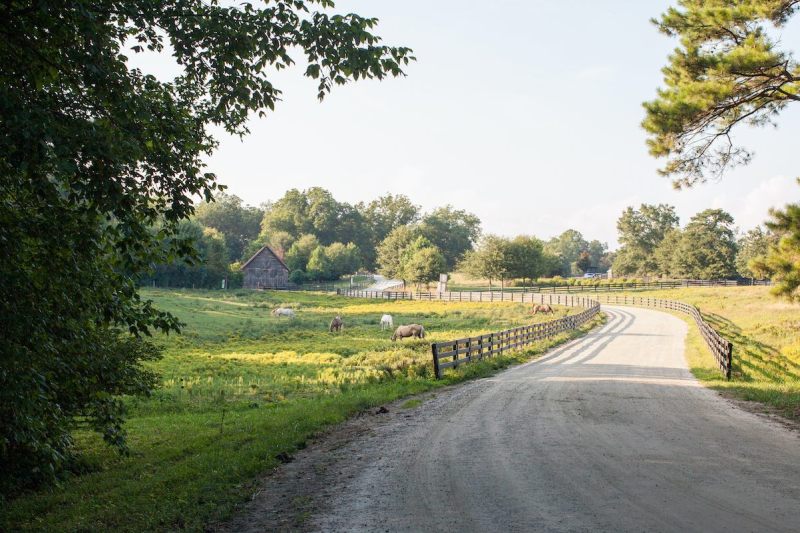Few people have reinvented their lives—and the lives of others—as radically and impactfully as Steve Nygren. From pioneering Atlanta’s casual fine dining scene in the 1970s to founding Serenbe, a biophilic wellness community nestled in the hills of Georgia, Nygren’s journey is one of vision, values, and a deep commitment to living in harmony with nature.
What began as a spontaneous weekend drive to show his children farm animals eventually led to the purchase of 60 rural acres and a complete lifestyle shift. That grew into what is now Serenbe: a 1,400-acre community designed around the principles of sustainability, human connection, and holistic well-being. It is home to more than 1,500 residents, 700-plus homes, a boutique hotel, and one of Georgia’s first certified organic farms.
Over the past two decades, Nygren has not only built a thriving village but has helped ignite a broader movement around intentional living and regenerative design.
In this Q&A, Nygren reflects on his entrepreneurial path, the challenges of building a community rooted in purpose, and the everyday practices—both small and significant—that can bring more meaning, health, and connection into our lives.
Q&A with Steve Nygren

The Manual: Can you walk us through your journey from serial entrepreneur to founding Serenbe? What inspired you to shift from previous business ventures to creating a biophilic wellness community?
Steve Nygren: I started my career in hospitality, and in 1972, I took a leap of faith and opened The Pleasant Peasant — a disruptor restaurant that led the movement to bring the concept of casual fine dining to Atlanta. Over the years, as I continued to grow the business, it ultimately became a successful restaurant group with 34 locations across eight states.
In 1991, after a weekend drive to show our kids some farm animals, we purchased 60 acres on a historic farm just outside the city. The time we spent there made a profound impact on our family. After three years of weekends, I made the life-changing decision to sell my company, sell our house in Atlanta, and fully embrace farm living.
Seven years later, while we were out for a jog one day, my daughter Garnie noticed a bulldozer clearing trees in the forest next to us. At first, I feared it was the start of development encroaching on our land. It ultimately turned out they were clearing trees for a small plane runway, but that moment sparked something in me — and over the next five weeks, I had another 600 acres under contract in hopes of protecting the land, bringing me to a total of 900 acres. I began ideating around how to best preserve this natural environment and realized that the best way forward to protect the land long term was to develop part of it as a model of a new and better way to build, which ultimately led to the creation of the biophilic wellness community known today as Serenbe.

The Manual: Serenbe is described as a blueprint for sustainable, nature-connected living. What were the biggest challenges you faced in developing this community over the past 20 years, and how did you overcome them?
Steve Nygren: One of the biggest challenges came from the dissent among land owners of what was an unincorporated part of the county; half of the people who owned land wanted the development for economic reasons, and the other half didn’t want the land touched for preservation reasons. So, we had to find a way to reconcile these two schools of thought.
What enabled us to get from this disconnected starting point to a strong community renowned for its connection amongst residents and closeness to nature twenty years later was a continued commitment to listening and collaboration — while remaining focused on the principles of biophilic design. As a result of being firm on our commitment (and of course using practical common sense), we learned three lessons from our challenging start:
- Be clear on your vision. If you aren’t, you might easily be swayed by someone else’s vision.
- Don’t be afraid to say, “I made a mistake.” When you make a mistake with whom you hire or what you launch, course-correct the minute your gut tells you a change is needed.
- Look past the established regulations, perceptions, and habits regarding how things are done. Do consider commonsense solutions. Many times, these solutions are found in the way we did things a century ago.
The Manual: Your book, Start in Your Own Backyard, debuts this October. It emphasizes small, intentional changes for holistic well-being. What are a few actionable steps our readers can take in their own homes or neighborhoods to foster connection and wellness?
Steve Nygren: There are several.
- Experiment with growing a garden at home. Working in the soil improves mental and physical well-being, and food you grow yourself is fresher, more flavorful, and better for your body. Start small: even a few pots of herbs or tomatoes can change how you eat and feel.
- Use your front porch more often, or create an entrance that encourages interaction with passersby and neighbors.
- Support your local farms and farmers’ markets by incorporating seasonal, fresh produce into diets free of pesticides.
- Get involved locally. Accept a position on the homeowners association, building’s oversight committee, or even run for school board or city council to help enact changes in your community based on biophilic principles.
- Even simpler steps for daily life include reducing screen time, devoting more time to being in nature, whether that’s walking, gardening, or even sitting by a window and viewing green space.
The Manual: Serenbe attracts a diverse range of residents, from young families to retirees and even celebrities. How do you design a community that balances intergenerational needs while fostering a sense of belonging for all?
Steve Nygren: At Serenbe, people of all ages are able to co-mingle as they enjoy life together. Children, the elderly, and adults of every age in between have opportunities to organically spend time together without artificial age-related barriers.
On any given day at Serenbe, you might see children, young adults, middle-agers, and elders enjoying life together. Everyone interacts on the street, sitting on their porches, or hanging out in one of our pocket parks. Seniors and children alike may enjoy fishing in the pond, wading in streams, taking nature walks, and attending pop-up music concerts.
Serenbe offers a variety of housing options and accommodations, making the community ideal for seniors to relocate to be closer to all generations or to have second homes.
Serenbe’s Art Farm, a welcoming and vibrant arts group, aims to bring guests of all ages and backgrounds together through thoughtful art programming across mediums and platforms.

The Manual: In today’s hustle culture, you advocate for redefining ‘success’ to prioritize mental and physical health. What mindset shifts or daily practices do you recommend for men looking to find balance in high-stress environments?
Steve Nygren: Even men in high-stress careers or environments can incorporate simple steps into their daily routines, such as reducing screen time, and carving out dedicated time to be in nature – whether that’s a quick walk after dinner to get some fresh air, or a weekend hike to reset your mind after a long week.
- Skipping chain grocery stores and supporting your local farms and farmers’ markets by incorporating seasonal, fresh produce into diets free of pesticides.
- Get involved in your community beyond just your career. Don’t get so caught up in the daily grind and hustle of your career that you neglect the elements of a well-lived life: arts for inspiration, agriculture for nourishment, health for wellbeing, play for a joy-filled life, and education for awareness.
- My weekly habits include walking to as many places as I can. I can hit 20,000 steps – incorporating cold-pressed juices into my diet, eating fresh veggies from our local farm, social engagement with family, friends, and visitors, and finding purpose in my day-to-day.
The Manual: Serenbe’s 1,400 acres of green space and its organic farm are central to its identity. How does access to nature and fresh, local food impact the well-being of residents, and what can urban dwellers learn from this?
Steve Nygren: In building Serenbe Farms directly within the community, we started the “agrihood” movement. Farms are a great attribute to any community, but often they operate on the outskirts of villages and towns and aren’t actually integrated into them.
Serenbe was one of the first modern developments to purposely build homes directly adjacent to a farm. In fact, for many residents of our Grange hamlet, where our farm is located, fields and pastures are literally in their backyard!
Building homes next to a farm was one of the many things traditional developers thought I was crazy for doing; however, I recognized that there were plenty of undiscovered benefits.
Serenbe’s residents build an intimate relationship with the farmers, the farm itself, and all the people who visit it. Plus, healthy, fresh produce is never far away.

The Manual: You’ve said that Serenbe is about creating connections—between people, nature, and the arts. Can you share a story of how these connections have transformed the life of a resident or visitor?
Steve Nygren: Yes — Caroline and Eric, who own Minro Studio, are great to highlight. They moved here, bought a live work, opened a coffee shop and ceramics studio, and became a center of Mado social and cultural fun.
The Manual: As an urban planning leader, what do you see as the future of community development? How can other cities or towns adopt elements of Serenbe’s biophilic model?
Steve Nygren: Change can begin with how your neighborhood, HOA, or town approaches common-sense improvements. Simple changes communities can implement include:
- Creating a central mail station, encouraging folks to interact and connect, and this also saves energy for your postal worker, who only has one delivery stop.
- Remove or reduce cultivated traditional lawns and replace them with edible and native plants to create “food forests” that will promote pollinators and reduce the need for intense resources such as watering, pesticides, and fertilizers.
- Create “third places” areas that can serve as community hubs for neighbors, like communal benches and shared gardens or a local coffee shop or business to convene with other locals.
- Promote intergenerational living while encouraging “uncaged elders” and “free-ranged kids” who can learn from each other and interact.
The future also involves looking at the past, and connecting deeply to nature and to one another as we did decades and even centuries ago, whether that’s creating communities that are less reliant on cars, building with the land rather than against it, and prioritizing connection and community.
The Manual: What’s one belief or principle you’ve held onto throughout your career that has guided both your personal growth and the success of Serenbe?
Steve Nygren: One belief that has consistently guided me—both personally and professionally that in any situation, we ultimately have two choices. We can either accept things as they are, even if they trouble us, or we can step forward and become part of the change we believe is necessary. I’ve chosen the latter throughout my life, and it’s this principle that has shaped both my own growth and the evolution of Serenbe. Progress only happens when we have the courage to engage with challenges rather than ignore them.
The Manual: With Start in Your Own Backyard releasing this October, what do you hope readers take away from the book, and how can they start applying its lessons to their own lives?
Steve Nygren: In a time when the constant noise of news and social media often leads to fear, anger, or helplessness, I hope this book inspires readers to redirect that energy toward empowerment and change. Rather than feeling overwhelmed, I share what I consider radical common-sense solutions that readers can then consider in their own immediate sphere of influence. Change doesn’t have to start with sweeping policies or distant leaders, it can begin with how you live, what you prioritize, and how your family interacts with nature and community — right in your own backyard, and you’ll be surprised at the ripple effects.




